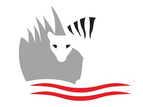|
Well with mixed feelings today we drove ITIKI into the dock at Tyrell Bay Marina, here in Carriacou, Grenada, where she was swiftly but gently lifted out of the water. She had a nice bum clean, as she was a little furry down there, and is now resting on her keels. This season we have hurricane straps on each corner to ensure ITIKI stays put, even in the strongest winds. These straps, and our nerves, will have a little test on Tuesday night when a tropical LO passes to the south of Grenada, pushing strong winds over Carriacou where we are. Check out the video below to see how it all went.
1 Comment
Dominica, officially known as the Commonwealth of Dominica, is an island country situated between the French islands of Guadeloupe and Martinique. It has a land area of 750 km2 and population of around 72,000. The island gained independence as a republic in 1978. Dominica was settled by the Arawak arriving from South America in the fifth century, and they were displaced by the Kalinago by the 15th century. Columbus is said to have passed the island on Sunday, 3 November 1493 and we also passed by Dominica on the 18th of February 2022, on our way north, skipping it to go directly from Martinique to Guadeloupe. This was mainly because the entry requirements were quite restrictive (Covid tests, quarantine etc), and Agents and government fees were on the high side. Fortunately on our way south we heard that restrictions had eased, Covid test was no longer required, agent’s fees had been lowered as well, so we decided to give it a go. We are certainly glad we did! 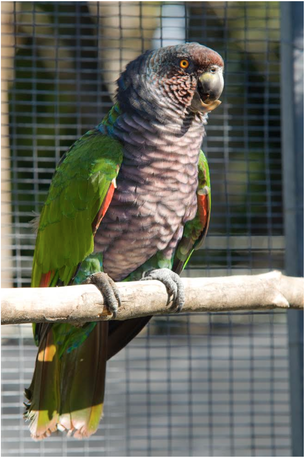 The Sisserou parrot The Sisserou parrot
Dominica has been nicknamed the "Nature Island of the Caribbean" for its unique, natural environment. It is geo-thermally active and boasts the world's second-largest hot spring, called Boiling Lake. The island hosts lush mountainous rainforests and fast flowing waterfalls (there is no shortage of water here!) and is home to many rare plants, animals, and bird species. The rare Sisserou parrot is found only on Dominica, it is the island's national bird and features on the national flag, making it one of the only two sovereign nations whose official flag features the colour purple. Now there is something useful for your next round of Pub Trivia – which is the other country with purple on the flag??
We left Ilet Cabrits, (Les Saintes, Guadeloupe) around 9am with 1 reef in the main and a full genoa, having a great reaching sail southwards to Portsmouth, 21nm away, arriving around midday. Portsmouth is in the north of the island and although it’s not the capital, it is a large and nicely protected harbour and the small town is well set up to receive cruisers. We picked up a mooring buoy with the help of Andrew from PAYS (Portsmouth Association of Yachting Services) which is a NFP cooperative that has been formed to provide assistance to passing yachts and cruisers, regulate tour guides and share the work around amongst the independent operators. We handed our papers and passports over to Andrew with the promise of an efficient clearance process (US$40 all inclusive). Had lunch and waited on board and Andrew came back to tell us that we were cleared to go ashore and walk around. We walked along the road up to Fort Shirley on Cabrits headland north of the anchorage (which used to be an island). The fort is beautifully restored and now used as a function centre. It will be hosting a big jazz festival next weekend! Got back to the PAYS office and our papers were not quite ready so we had a drink at SeaBird, the beach bar next door. Debby and Fraser (SY Everlonger) arrived and joined us and not long after that our papers were delivered to us in the bar. Great service. We are cleared in and out in one go, and can stay for 2 weeks. Plus Debby has booked us on a tour tomorrow.
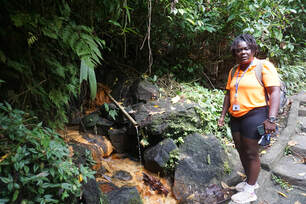 Kish, our guide for the day Kish, our guide for the day
We had a 7am start to meet the lovely Kish, our amazing tour guide for the day (and only female tour guide here). There are just 4 of us and a bus sized for 10 so it’s very comfortable. We head south and the roads are quite reasonable. Apparently the Chinese have put some money into Dominica, and we pass the Chinese Friendship Hospital (formerly the Princess Margaret Hospital…) Kish points out the some solar / wind powered street lights. The street lights have been looted of their batteries and solar panels so none of them work. Kish is a real lively character and she throws herself into all of the activities, sometimes literally! We stop first at Trafalgar Falls, which is a double waterfall in a lush, green valley. Just as we are leaving a couple of tour buses arrive from the cruise ship so it was worth getting here early. Next stop is a little café where we have some breakfast, which ends up being brunch, before heading on to Middleham Falls. It’s a 45 min walk each way and we have to cross a stream and scramble over some reasonably rough and rooty terrain, steep up and then down again and very muddy in places. The 60m high waterfall is spectacular though and we can scramble over some large boulders to get to the pool at the bottom of it. The water is pretty cool (no its refreshing says Kish!) and there is an incredible down draft from the fast flowing water like a roaring wind – amazing! We head to Titou Gorge which is quite a surprise. We have to don glamourous, tight fitting life jackets and hop into a pool – warning!! - the water is even more “refreshing” than at the waterfalls. We start swimming though a gap in the rocks and into the gorge. The walls of the narrow channel reach some 20m above us and the light filters through the forest at the top. We continue swimming along the winding canal with twists and turns for about 150m or so. As we get to the end it is just WOW as we see water gushing down a narrow “chimney” into a small pool at the end of our canal. With Kish’s help we scramble into the tiny pool. The force of the water is incredible and it is barely possible to stand under it. Getting out was a challenge as it means sliding off a rock and getting washed back into the stream by the fast running water, trying to hold onto the bottom half of my swimmers! Kish plunges off the edge with a half somersault, trying to film with her phone at the same time. This really was the highlight of the day and we were all blown away by the experience. Back in the pool there are a couple of pipes with some warmer water flowing out so we can thaw out a bit. Also from here is the start of the track to the famous Boiling Lake, 3 hours one way! Not for us today though. Apparently it’s only just re-opened after 3 weeks as it had run completely dry for some unknown reason.
We stop by the Botanic Gardens to see a few different native trees as well as the Jaco parrot and Sisserou parrots, which they are trying to breed. Next we head further south and all the way down past Roseau (the capital) to Scotts Head where the Caribbean meets the Atlantic. We will sail past this headland when we leave, but it is really interesting to reach it from land so we have seen both ends of this small island country.
Our final stop is just to the north for snorkelling at Champagne beach. This is so called because there is a spot where bubbles of air come out of the rocks below and rise like champagne in a glass, swirling in the currents like smoke as they rise to the surface. What a novel experience to swim through these bubbles - I guess this is the closest we will come to swimming in champagne! We stop at a roadside BBQ to have fried plantains for afternoon tea, a favourite local snack. Kind of a cross between a potato and a banana – Mmmm…Great carbohydrate fix!
It’s a long drive back to Portsmouth but it’s been a great day and Kish has been very entertaining and informative with her stories about Dominican life and how they fared during the Covid pandemic. It was a really challenging time for them with their regionally renowned university closing, and tourism, particularly from yachties and cruise ships, coming to a complete halt – No job-keeper or jobseeker here! People just have to fend for themselves. We have dinner ashore at Mandiba before heading back to the boat for an early night.
It seems that many yachts are now heading south and a few people that we have met elsewhere turn up in Dominica this week. We catch up with Janet and Paul George from WindWitcher, who arrived yesterday when we were on the tour. They also have a Helia and we first met them in our last Spanish anchorage before arriving in Gibraltar, keeping in touch since then. About the same time team Cushla (who we met in Mindelo & Barbados) arrive, sneaking past us and anchoring close to shore. In the evening there is a BBQ at PAYS, which is an institution apparently, and pretty much everyone in from the anchorage is there. They do a fantastic spread with chicken and fish and salad, as well as their infamous rhum punch… It was lovely to catch up with everyone’s stories and meet some new friends as well. It was a lovely evening and Dominica has been the most sociable place we have been for a long time.
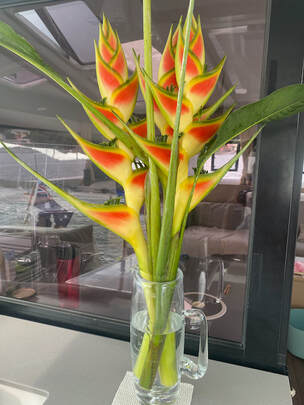 A touch of Dominica on ITIKI A touch of Dominica on ITIKI
Woke with a bit of a headache the next morning thanks to the PAYS rhum punch. The skipper from Samadhi (56’ Lagoon) dropped by on the RIB to say hi. They were on the mooring buoy near us, which we had though was set a bit too close. In the morning we noticed that they had moved to another buoy and wondered why. He told us that around midnight they woke as our boats had swung in opposite directions and our bow was touching their RIB! They tried to wake us, banging on our bow but due to our bedroom being in the stern (and also possible the 2nd or 3rd rhum punch…) we slept through the excitement. Ooops! Anyway we decided to go and anchor rather than staying on a buoy for another night, so we head out and dump the holding tanks before coming in a little closer to the fishermen’s wharf. One of the PAYS tour guides came by to say hello and mentioned that there was a sunken freighter near the spot we had chosen. Keith had a snorkel around and yes indeed there was a sunken freighter, although not exactly as marked. We decided we were a little bit too close to it, so went in and anchored closer to shore. It’s a weedy bottom but good holding. We made contact with Martin, one of the tour guides for the Indian River, who came highly recommended and he brings some beautiful Heliconias to ITIKI.
Paul and Janet (Windwitcher) came around for sundowners later in the day and we ended up chatting until about 9pm! They are heading south tomorrow and will haul out at Spice Island boatyard in Grenada (we are going to Carriacou, just to the north).
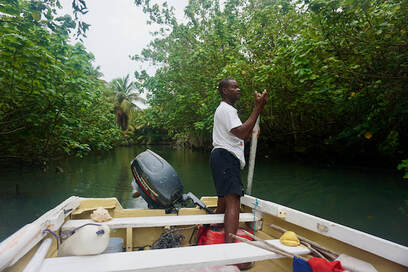 Poling along as no engines allowed Poling along as no engines allowed
Early next morning we do the Indian River tour. It’s a magical time of day and we have it to ourselves with just the sound of the birds as Martin our guide rows and poles his wooden dinghy upstream. The river is so quiet, with only the sound of birds. There are herons on the water’s edge and a kingfisher follows us as we make our way along the waters edge. The river is shallow, the water is muddy and the most incredible gnarly tree roots line the water’s edge, making a ghostly scene. Apparently some scenes from Pirates of the Caribbean were filmed here. Martin is a trained botanist and very knowledgeable about the flora, fauna and ecology of Dominica. He catches a fairly large crab and gives us an anatomy lesson. The males have a large claw on the right and females on the left. We stop and walk ashore briefly at an old settlement where Martin shows us some more interesting plants and explains their medicinal uses before slowly drifting back down the river. He stops to pick some Noni fruit, apparently it has some pretty amazing medicinal properties and I should cook it up and drink the juice (whilst ignoring the disgusting smell…). We continue to chat over coffee after he drops us back to ITIKI.
Well it had to happen I guess - our first brush with “the C word” (Covid!) since we have been back cruising. One of our fellow cruisers, who was at the BBQ the other night (and who shall remain nameless) drops by to tell us his wife has just tested positive for Covid. She only has mild symptoms, although feeling quite tired, and he is negative. I decided to test myself and I am negative. It’s not easy to shove that thing up your own nose - both nostrils!
On the strength of that we drop over to see Cindy and Adam from SV Bravo intending to go for a walk to Fort Shirley, but there is quite a swell in the bay and all of the dinghy docks are too surgy to leave the RIB so we give up and just have coffee and cake on ITIKI. They are leaving tomorrow for St Martin so need to go and sort out their paperwork. We finish the day with cocktails on the upper deck and we end up having an early night There is some loud music on the beach until 2am but we sleep through it.
Its Sunday morning and the church bells sound around 7am. We have omelette for breakfast and I make some bread. It’s so hot and humid and we feel we should go ashore and do something but it’s just overbearing - we just have no energy and now start wondering if we might have Covid… Keith puts the gennaker up and sorts lines as we are heading off to Martinique tomorrow but that is about all we can manage. I get a message from Kish to see if we want some of her famous Johnny cakes as she has been baking, so I go ashore to get some. They are kind of a cross between a donut and … well I don’t know really. They have a kind of cheesey filling – great comfort food and very filling! I always like to try the local treats although some things are like Vegemite – you have to grow up with it to appreciate it.
Well Dominica has been fantastic and I am so pleased that we did drop by on the way south. We have met some very special, friendly and helpful people, caught up with "old" friends and made some new ones! We would really love to come back, do some more hiking and see more of the north of the island. For now though we will continue to head south. We set off early the next morning and motor sail initially as we are in the lee of the island. Cushla heads off under sail and seem to be heading out to sea. We get to the southern end of Dominica and can sail a better angle but the sea state is awful and its pretty uncomfortable. We end up with 2 reefs in the main as we are getting quite strong wind between the islands – it tends to compress and blast through these gaps. As we get to the top of Martinique the wind is dying and wrapping around the top of the island. We slow right down, shake out the reefs and get the main caught on one of the lazy jacks, end up a bit close to some fishing pots, get annoyed with ourselves and so we drop the main and motor into the anchorage of St Pierre, where we have been before. Cushla arrive safely as well but we are all feeling too knackered to go ashore or do anything so an early night is in order.
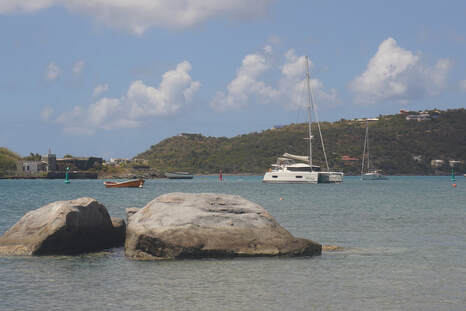 Trellis Bay Trellis Bay
Left Anegada about 9ish for the 20nm journey back to Tortola island. Had a great reaching sail across to Marina Cay again averaging 8kts VMG despite a fair bit of a side-on swell. We furled the headsail and strapped the main to motor through the Camanoe Gap between Great Camanoe Island and Scrub Island, dropping the main just off Marina Cay before dropping the anchor. It’s a deepish anchorage here and we are south of the mooring field. It’s nice enough but turns out to be a bit of a thoroughfare for ferries and power boats going across to Trellis Bay on Beef Island, off the eastern end of Tortola. We decide not to stay the night and after lunch so we head across to Trellis Bay ourselves. Its right beside the end of the airport runway (a lot of people use it to pick up guests) and with all the mooring buoys and shallow depths there is limited space to anchor so we have to take a buoy. The bottom is weedy, rocky and corally, with a smattering of boat hooks (from charter boats no doubt) and doesn’t look fantastic holding anyway. We go ashore and have a walk along the beach as well as checking out the “market”. There is a small wreck in the middle of the bay so we swim over and take a look. Not much to see, a few fish hanging around. In the afternoon there are people camped on the beach and having races with remote controlled power boats. They sound like leaf blowers on steroids! Who knew there was something more annoying than jet skis. Every time you thought they were finished they started up again! Must be just changing batteries. Later in the day they cranked up the doof-doof music but thankfully that was short lived!
In the morning I took the RIB ashore solo(!) and went to the supermarket, launching and docking the dinghy by myself. No bananas! Must be the first time in history we have run out!! When I got back to the boat I realised I was missing the cheese so I had to go back again and repeat the exercise again. Very stressful but I managed! We motored the few miles across to Guana Island, a small island just to the north of Tortola. There are 2 anchorages here both with a few mooring buoys as well. Ashore in the north there is a nice looking white-sand beach as well as an resort and a few houses stretching up the hill. We anchor south of the northern set of buoys, not far from the beach, and have lunch. After lunch Keith swims the anchor and the verdict is not good, the bottom is quite hard and rocky and the anchor is not set well enough for an overnight stay. We decide to put motors on and head across to the aptly named Little Bay that we can see less than a mile away, on the NE corner of Tortola. Here is a small, white sand beach with nothing much ashore and sand, glorious sand! The anchor digs in nicely and we decide to stay a couple of days as we have the place to ourselves.
The next morning we take the paddle boards ashore. There is a bit of a headwind and I am behind Keith (as usual). I watch him fiddling with his hat and see a reasonable sized wave coming towards him from behind. Nothing I could do but watch him do a little dance on the back of his paddle board and fall off! He was only in waist deep water, unscathed if not a little surprised by the experience, and did not lose his sunglasses or dunk his phone. There is not much ashore but the beach is lovely and we have it all to ourselves so we go for a swim. Although we can, and do, always go for a swim off the back of ITIKI, it is a nice experience to swim off a beach as well. Walking on sand into the water and floating gently about in the shallows, out of the current is lovely.
Left this beautiful spot mid-morning and just pulled out a headsail. Made our way slowly the 8nm across to Sandy Spit with 10-20kts up the duck. The anchorage is a tiny sand island inside a reef off Little Jost Van Dyk Island, and we anchor in quite close to it. Keith swims the anchor and we are all set for the night. A lot of boats come for a few hours, visit the tiny sand island, take their selfies and move on. After lunch I take a paddle board ashore and do the same, there are a couple of palm trees and a pile of Lambi shells but that’s it. We stay a couple of nights and spend some time chilling out, doing boat jobs and swimming and watching the comings and goings.
Keith was determined to be first on the tiny beach island the morning we left. He paddled ashore and wrote ITIKI on the beach for me to photograph from the boat, but it looked like iciki… Anyway you get the idea. We left just before 9am and swung around the end of Sandy Cay, another nearby but slightly larger sand island. We had intended to stop here but it is so similar to Sandy Spit and already packed so we don’t bother. We head across to Cane Garden Bay on Tortola Island, intending to just spend an hour there going to the supermarket, but we find a nice spot to anchor avoiding the mooring buoys and decide we like it. Just repositioned ourselves when we realised we had swung too close to another boat on a mooring buoy. Went ashore and the supermarket shelves were a bit sparse but she suggested coming back later as they were awaiting a delivery. We took what we had back to the boat and had a chat to an American couple on a Saona (QuiteTheCatch) who live on their boat 6 months of the year. In the afternoon we take the paddleboards ashore and watch the dive bombing pelicans. We stop at a beach bar for a cocktail and sit under an umbrella for a while, then head back to the supermarket and bingo! Delivery in, so we have bananas again! In the evening the music is fairly loud and goes on until about 11pm and then the parties continue on the charter boats. Well it is a popular place!
The next morning head north again to the southern shores of Jost Van Dyk Island, Amazingly there is no one anchored at Sandy Spit, they are all at Sandy Cay. We take a peek in to Garner Bay but there is really nothing there, a restaurant that looks closed and a barge on the western side, no beach. A few mooring buoys – meh! We continue on west to Grand Harbour and again its full of mooring buoys and lots of boats, there is maybe room to anchor right at the mouth of the bay but it is quite unappealing. Next stop is White Bay. This has 2 sides, the western side looks very busy with buoys and charter boats and plenty of restaurants and beach bars line the shore. We choose the eastern side and reluctantly pick up another buoy, as there is no space to anchor. We have to reverse onto it as it has no pendant, but no fancy trick techniques this time. Then we realise we are right next to QuiteTheCatch again. We take the paddle boards ashore on the western side and go for a walk up the hill a little to get a view. Lots of private villas here and a on the beach is Ivan’s stress free bar (great name!). Later we paddled over to the western shore and went for a walk along the beach, there are a lot more boats, people and beach bars over this side. Ran into Cathy and Steve from QTC who were drinking cocktails and smoking cigars in the water. Quite the party atmosphere!
Well White Bay was a nice enough bay, particularly our spot in the south, and we considered looking for a sand patch between the mooring buoys to stay for another night, but instead we decided to move on. QTC left earlier than us and put some sails up. We motored, intending to put a headsail out but it was on the nose and the batteries were a bit low so we ended up motoring all the way. From our anchorage we headed around the western end of Tortola, past Soper’s Hole – it’s a very popular, deep and well protected bay but quite tight, full of mooring buoys and plenty of boats. We keep going south realising later we probably passed through US waters as we skirted along the top of St John (USVI). Crossed paths with Quite The Catch again who are still sailing - hope they don’t think we are stalking them. Arrived at Privateer Bay, on Norman Island, just before lunch and we were delighted to find that it wasn’t full of mooring buoys or charter boats. There are some day use buoys on the eastern side near some caves, about 8 overnight buoys along the shore in the south of the bay, but they left a fantastic sandy patch to the west which had our name on it. Three other boats here already but we find a nice gap and the anchor is well set. Our mood lifts when we find somewhere special and uncrowded like this. After lunch I go for a snorkel along the western shore. There are some interesting fish and the water is incredibly clear. Later we take the dinghy across to the caves and have a snorkel around there. The coral is not fantastic but there are some more colourful fish, including quite large parrot fish. There is not much life in the caves themselves though, as they are a fairly dark.
From our anchorage, I swim and Keith takes the paddle board over to the western point again and we go for a snorkel. There are a few large bombies off the point but again, not very spectacular. A few larger fish. Keith does some more cleaning under the hull and spies a large barracuda and a sting ray. In the afternoon we take the dinghy across to Bight Bay, the next one around from our anchorage, and check it out. There are a lot of mooring buoys and charter boats as well as a resort in the corner. We then head over to The Indians, 4 conical shaped rocks near Pelican Island with a large reef surrounding them. There are quite a few day moorings over here and a line for the dinghy which we tie to. The snorkelling here is the best we have seen so far, quite extensive, good variety of coral and lots of fish. I swim with a school of small, flat blue fish for a while before being distracted by a larger, fish with flouro markings.
It’s time to move on again so we leave our lovely spot mid-morning and motored around to White Bay, tucked into the SE corner of Peter Island, 4nm away. It’s a lovely looking white sand beach and there are 3 monos here when we arrive, but they soon leave. We anchor well in the weedy sand but find that the boat is turning 360s. Swam ashore and walked along the beach where there is a big sign saying that the island is closed to visitors and we must stay on the beach. That is not too difficult given the high cliffs and dense scrub inland of the beach. After lunch we are not feeling too comfortable with all of the twisting and turning. The anchor has reset but the movement means we won’t get a good night’s sleep. It’s getting late by the time we decide to leave so we need to move quickly. In the next bay there are 2 cats anchored close to shore so we stick our noses in but find the bottom looks too rocky for our liking. There are a couple of mooring buoys but they are a long way out and too exposed to the strong prevailing wind. We head around the top of the island past Little Bay, Grand Harbour and finally into Deadman’s Bay on Peter Island, a further 10nm from our lunch anchorage. There is one other cat here (Flu Flu that we have seen in various places before). We anchor outside them and we are very happy with the set. It’s quite windy here but a strong breeze from consistent direction is a good thing as it holds us steady on the anchor. We are here just in time for sundowners and enjoy a beautiful sunset.
It was quite gusty overnight, a fair bit of swell coming into the bay and it’s too bouncy go ashore so we get away mid-morning. First “stop” is to take a look at Salt Island which has some mooring buoys to access a wreck dive, but it’s quite exposed and bouncy through the passage so we decide to continue on. We come into the bay at Cooper Island which is full of charter boats on mooring buoys and anchoring is prohibited, so we pick up a buoy intending to just stay for lunch. Some Canadians from a charter boat come around the anchorage in a RIB trying to get rid of their beer and some spirits before they leave to go back home. Surprisingly they do not have any other takers so we score a free case of Corona Light, a full bottle of Cointreau and one of Triple Sec, very generous and a worthwhile stop indeed, especially as we didn’t pay for the mooring buoy... We head away after lunch towards Virgin Gorda and our favourite anchorage near the baths. Sadly the conditions are very much different to before - there is a big swell coming in here so it is nowhere near as nice. We have to give it a miss and head to the more protected anchorage at Spanish Town, where we spent our first night in the BVIs. It’s still quite gusty but we are able to anchor in the exact same spot we did before. We have done a full circle of the BVIs, visiting all of the main islands, anchoring at or sailing by many of the smaller ones and so many beautiful bays.
Sadly it is now time to leave the BVIs and start heading south, so we go ashore in the morning to complete the check-out formalities and swing past the supermarket for a few last minute items for our upcoming crossing. As we don’t need a Covid test for our next destination we don’t need to go to Road Town and we can leave the BVIs the next morning. We head over to Prickly Pear Island 6nm away, so we can start our journey a little further to windward before heading south. We motor all the way and this time we choose to enter Gorda Sound through the narrow and shallow gap between Virgin Gorda and Mosquito island, as we had seen other cats exit this way when we were here before. At one point we had 15cm under the keel and very interesting look on Keith’s face! We anchored in the same spot off Prickly Pear island, rested up and prepared for tomorrow’s big passage.
Hughey’s first law of sailing karma
If you cast your mind back to high school physics you might recall Newton’s 3rd law of motion (For every action there is an equal and opposite reaction). A similar law applies to sailing and it goes something like this: For every glorious downhill run there is an equal and opposite ie “god-awful” upwind beat that is deposited into your sailing karma bank. Sooner or later, you have to make a withdrawal. We have been reaching and running with the trade winds since our Atlantic crossing and apart from a short slog from Les Saintes to Gwada, we have managed to avoid sailing to windward for a very long time. As everyone knows, gentleman and cats don’t go to windward. In terms of pointing, the best we can manage is around 45 degrees to the wind before you add our 10 degrees of leeway, but that is only half the story as our shallow keels mean the wind and current can more easily push us sideways, sending us off course and forcing us to tack back and basically zig zag our way to our destination. Our journey north to the BVIs had also been taking us gradually more westward so getting back to the French Antilles in the prevailing easterly trade winds was always going to be challenging. Ahead of us lies a 220+nm journey from the BVIs to Deshaies, Guadeloupe with a COG of 130o. We were expecting 16kts gusting 21kts Easterly (80-95o) with a swell 1.7-2m (at 60o). It might not sound ideal, but there is no point waiting for better - that’s about as good as it gets as the trade winds are pretty relentless at this time of year and don’t tend to change direction all that much. Needless to say, there would be windward sailing and lots of tacking involved! We were mentally prepared for it, if not looking forward to it.
We left at 7:30am, motoring around Saba Rock Resort, through the well-marked gap in the reef and out in the open waters. We started with 1 reef in the Main & Genoa, close hauled at 45s. Our progress was slow, as we expected, and we had lumpy seas. Conditions are very similar to the Atlantic crossing except we are going to windward! Our leeway means we are gradually falling further and further south of our course. Late on our first night we tack onto starboard and our VMGs go into the minus. We are just west of Saba, but on checking the radar it looks like we have tacked into an approaching squall, so we quickly tack back again. We continue on starboard tack through the night, passing Statia on our left. In the wee hours of the morning we tack onto starboard and head in towards into Kitts & Nevis. We would have liked to stop here, however their entry requirements were prohibitive and unwelcoming so we satisfy ourselves with a motor-sail along the south coast of this green and misty island. The wind shadow is a welcome relief although short-lived and as we come back into open water we tack back onto port and switch the motors off. We continue this way through the day and into the early hours of the next morning, falling further and further south of our course to Deshaies. We can barely make out Montserrat in the darkness we are so far from it. As I come on watch at 3am we decide to pull the pin on windward sailing and put the engines on so we can reach our final destination in reasonable time. We do the “two Volvo reach” for the final few hours which saves us from heading further south and having to do 15 tacks to get back. We can make a bee line to Deshaies, on the NW side of Gwada and arrive in time for breakfast! As much as I hate burning fossil fuels, for the sake of our sanity it was the right decision and lovely to arrive and drop anchor in a familiar location after a challenging passage.
We spent just on 3 weeks exploring the BVIs and this was as far north as we went this season. The self-governing British territory consists of 4 larger islands (Tortola, Anegada, Virgin Gorda, and Jost Van Dyk) and 32 smaller islands and islets, 20 of which are uninhabited, and with a total area of about 150sq km. The BVIs are physically very close to the USVIs (which due to the high level of entry bureaucracy we decided to skip). There are also a couple of Spanish Virgin islands but they are a bit out of the way, making the sailing angle of a return journey even worse than the one we had. The islands do not seem all that British, although English is the official language, the $USD is the official currency. The inhabitants of the islands, are mostly descendants of slaves imported in the 17th and 18th centuries to work the sugar plantations. The BVIs are hugely popular with charter boats and here we saw the highest concentration of them so far, and mostly catamarans, very few monos. Most popular anchorages have mooring buoys put in place by the local authorities, yacht clubs or National Parks and the price is set at US$30 per night! Some bays are completely full of them, making anchoring very challenging if not impossible. We generally avoided those spots if we could. That said, without the buoys I can imagine it would be sheer chaos in the popular bays, with so many “inexperienced” charter boats vying for space. It was nice to be able to do short hops from island to island, bay to bay, without having to change countries! We didn’t do a lot of exploring ashore or inland on the islands. The islands are quite steep so walking anywhere, other than along the beaches, involves a serious trek. Private, gated mansions and thick forest also limit access to the interior and in some of the townships the impact of Cyclone Irma, that came through in 2017, is still quite evident. 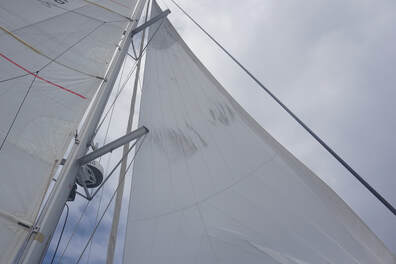 Yes its anti-foul on the gennaker! Yes its anti-foul on the gennaker!
Getting there
We are away just after 4am for the 84nm journey from Marigot Bay in St Martin (FR) to Spanish Town on the island of Virgin Gorda, BVIs. We hoist the main with 1 reef as we are expecting the usual 20+kts but downwind for a change. Its lovely to have the wind behind us and the following sea is not too rough, although there are some cross swells. We pull out the full genoa and change to a goosewing configuration. As the breeze starts to lighten we shake out the reef and switch to the gennaker, goosewinged. We are getting along quite nicely when BANG! we snap the gennaker halyard and the sail comes crashing down and heads under the boat. Keith was able to get it out of the water but it is covered in antifoul – not a good look. We once again put it up on the kite halyard but the gennaker halyard is well and truly buried inside the mast. Surprisingly we don’t see many other yachts along the way, and the rest of the journey is pleasant and uneventful. We come through the passage between Fallen Jerusalem Island and the southern end Virgin Gorda, avoiding “The Blinders” – some nasty rocks which are awash but well charted and clearly visible in daylight. We sail past the iconic “Baths” and drop the sails before motoring into St Thomas Bay, Spanish town. We drop anchor inside the mooring buoys and are informed by another yacht that we can’t check in here. I thought that might be the case, although we were still able to select it on the SailClear form. They don’t have the facilities here to do the Covid checks so we have to go to Road Town, on the island of Tortola. It’s already after 4pm and it’s a couple of hours away so we decide to go early tomorrow morning as we still have time on our Covid test clock. We treat ourselves to welcome cocktails and have an early night.
Another early start the next morning to motor the 22nm into Road Town, on Tortola island. We anchor off the ferry wharf and take the RIB to check in. The “dinghy dock” (ie the shore end of the ferry wharf) is a bit dodgy, solid concrete, very surgy and a long way up! A security guard rushes over and when we ask for check-in he ushers us around the back of the building toward the health officials. We pass the health check and then go into immigration and customs. US$40 all up, including the pass for the national park. We head to an ATM but don’t bother hanging around Road Town. There are quite a few vacant lots around town and we realise later that the buildings here had been razed by Irma and not rebuilt. We head back across to Virgin Gorda and anchor at Valley Trunk Bay, which is just north of The Baths. Some fellow cruisers mention a cable on the bottom and when we swim the anchor can see that it’s just beside our anchor. Also the anchor is not that well set on hard ground. Just as we are resetting it another cat is leaving who was closer in to the beach so we motor up to take their spot. A skippered charter boat charges towards the same spot at a rate of knots, giving us the glare and expecting us to back off. She clearly has never skippered on Sydney Harbour for NYE and Keith stares her down so we win out and anchor closer to the beach. The water is so crystal clear we can see the anchor from the foredeck! We are still quite tired and decide to stay for a few days as it is really lovely and calm. Keith goes up the mast and tries to find and retrieve the gennaker halyard but it is firmly stuck and he ends up cutting it off. I go for a bit of a snorkel but there is not much sea life and the coral is all dead.
In the morning we dinghy over to visit the “iconic” Baths, a short distance to the south. It’s not permitted to anchor here and dinghy’s are not allowed on the beach either but some mooring buoys are provided for daytime use only. We tie the dinghy to one of these, swim ashore with our masks and snorkels and we are the first on the beach. A couple of cats have already picked up buoys but they seem more intent on fishing off the back of the boat than enjoying the location.
The area itself is a small beach surrounded at either end by huge boulders of various shapes. How they got here is a bit of a mystery, but it’s quite amazing how they are stacked here as if they were tossed down from above. Waves crash in between them and the sand is beautiful and white. There is a cave formed by boulders at one end of the beach that you go into and see daylight up above. There is also a small beach bar as well, but it’s not open yet and the crowds are starting to arrive so we head back to ITIKI.
In the afternoon I take a SUP to the beach by our anchorage and walk along it. There are also some boulders here that are quite spectacular and again the sand is beautiful and clean. The water colour is incredible as well. Plus there are no other people here! Sadly, we can’t put the drone up as it’s a no-fly zone, due to the proximity of the airport.
We can see the mooring buoys at The Baths from our anchorage and by 8:45am the next morning there are no buoys! Completely full of charter cats! We must have got lucky yesterday, maybe it was “changeover day” for the rentals. We decide to put the SUPs in the water and go for another look between there and our anchorage. We follow the water’s edge and stop for a swim at the beach south of ours. There is no-one around at all and the water is again beautiful and clear. We can take the SUPs into The Baths as well and despite the number of boats anchored, few have made it to the beach yet so it is not too bad. We get our picture taken and head back to the boat. In the afternoon the boat that told us about the underwater cable is leaving but their anchor is stuck between two rocks. Keith heads over in the dinghy to help try and dislodge it. They have managed to attach a trip line to it and eventually it shifts and they are off.
Several quite large catamarans have turned up at our anchorage, obviously attracted by ITIKI. Keith makes another attempt to retrieve the halyard and this time, incredibly, finds the other end of it! It’s difficult to pull through though and he manages to get about a meter out. To be continued. We up anchor and head over to take a look at Dog Islands just to the north of us. We could see one beach from our anchorage that looked ok, and there has been one powerboat anchored there the whole time. As we get closer we see it’s not much of a beach and no anchorage, and in fact the powerboat is on the shore! We head around the Western side of Great Dog Island and see there are some mooring buoys here, it’s quite wild but not what we are looking for so we go between George Dog Island and Great Dog Island and head for Savannah Bay, which is also on Virgin Gorda Island and 7nm from last night’s anchorage. Here we need to enter in the bay at the southern end where there is a gap in the reef, and anchor in sand between the reef and the shore. We anchor in what looks like sand but turns out to be hard so we move a little closer in to get a better set in nice sand. There is a beautiful long, white beach ashore and we watch as the 7 crew from a large motor yacht bring umbrellas, beach chairs, dining table, BBQ etc ashore for the 3 “guests” to enjoy.
We go ashore in the dinghy and have a bit of an adventure as there is quite a bit of surf hitting the shore, despite the protection of the reef. We were getting close to shore checking whether it was safe to go in and I looked back to see a largish wave about to break on us! Too late! We copped it side on then the prop we hit a rock as we tried to manoeuvre away and the engine stopped. Another wave then took us broadside and fortunately pushed us nose in towards the shore. We surfed in and jumped out to pull the dinghy up the beach. Not quite as we had planned, but hopefully the powerboat people didn’t notice. We walked nonchalantly along the beach and back past them and they did seem to be smirking a bit. We noticed that they have written their boat name in the sand, so we did the same. Leaving the beach in the dinghy was an even bigger challenge. Our first attempt, the dinghy got swamped while I was in it. Keith wasn’t in yet and got knocked over, losing his good Oakley sunglasses. I managed to jump out and pull the dinghy onto the beach. We were lucky not to capsize! Keith searched in vain for his glasses. The second attempt at launching was more successful, although still a bit hair raising! The dinghy is full of sand and a fair bit of water and we are both soaked so we go back to ITIKI to catch our breath. Fortunately there were no phones in pockets etc… Keith takes a paddle board in to look for his glasses on the off chance they have washed ashore, like Martin’s flip-flop in The Canaries. Meanwhile I clean the sand out of the dinghy. No luck with the sunglasses unfortunately.
It was a rolly and noisy night with waves slapping the hull and knocking us this way and that, so we decide leave early. We head out taking a tour around Seal Dog Island before heading into Prickly Pear anchorage 7nm away in Gorda Sound. We can see Necker Island as we pass through the entrance to the Sound. This is Richard Branson’s private island home which can be rented out in its entirety (48 guests max) or at certain times of the year, by individual cabins. Lord only knows what the price tag is! If you have to ask you can’t afford it! Anyway there are quite a few boats in close at to the shore at Prickly Pear Island when we arrive so we anchor a bit further out/north. Anchor sets well in sand and the water is lovely, lots of turtles here and we immediately like the place. We dinghy over to Leverick Bay Marina on the opposite side of the Sound, to take a look around. It is a small marina with a bar/restaurant. There is a small market here so we get a couple of things and head back to the boat.
We spend the afternoon turtle spotting from the boat, even seeing a ray jumping out of the water – amazingly we were both looking at the right time. Keith dropped some food scraps off the back of the boat a few small fish turned up for a meal, as well as a rather sinister looking Remora. In the afternoon we dinghied around to the Bitter End Yacht Club and to have a drink. It’s a very laid back place with a small marina and busy little bar, as well as a few villas and a restaurant. There is a mini-market here as well with a rather gourmet and pricey selection.
The next morning we dinghy over to Leverick Bay to get some fuel for the RIB, then to the next bay around to find a skip for the garbage, thus saving the US$2.50 fee that Leverick Bay wanted (oh it’s a matter of principle!). The wind has really gotten up and its quite bouncy going across the bay so I got a bit damp in the front seat. We dropped into The Bitter End gourmet market and on the way back to ITIKI go ashore at Prickly Pear island to have a wander around. The beach bar here looks well maintained but doesn’t seem to have been open for a while. We walk along the beach and wander back to a small lagoon. Keith decides to bail out a dinghy that has been sitting at the dock for a while, slowly deflating and filling with water.
Left at 7am the next morning and had a great reach across to Anegada, 17nm north. The island is only 35 square metres with the highest point being 10m! Had 18-20kts, gusting 22s and it’s a little bit rough as the passage is quite exposed. Making 8kts VMG we arrived in good time and picked up a mooring buoy - the bay is quite shallow and there is limited anchoring area. It’s reasonably protected but still a bit of swell coming in. Ashore we rented a scooter to explore this small island, heading west first to Cow Wreck Bay. It’s a lovely beach with a bar and some accommodation but not many people around. We have a bit of a walk along the beach and then head back to the Bay.
We have booked The Wonky Dog restaurant for lobster dinner tonight so we have lunch on ITIKI and to pick up rain jackets as it looks a little threatening. Next we head east and find the flamingo lookout beside a large and mostly dried out lagoon. Of course there are no flamingos! I find out later they head out to feed in the morning and don’t come back until the evening. I guess that is what we have been doing wrong all the time, we have been visiting the flamingo haunts during the day. Nevertheless we have a great view across the huge pond which takes up a big chunk of the western end of the island. We head further along the road past the botanical gardens, which is a traffic island with a few trees in it. Also the Iguana Sanctuary looks like it has been closed for a while. I hope those Iguanas all got rehabilitated ok! We reach The Settlement, which is the main town of the island, but it is more of a collection of shacks and a few goats than an actual town. Next it is up to the north of the island were there some lovely beaches, including Jack Bay and Flash of Beauty Beach - I go for a swim at Loblolly Bay. Heading back we stop at Fisherman’s wharf, which is a smelly mangrove swamp with a few dead boats. We stop at a lookout for the conch shell mounds and it is possible to see a couple of them through the binoculars. The largest one is on the south east tip of the island, it must be huge. They are protected relics of the Amerindians and can only be visited with a guide.
We head to the restaurant around 6:30, Keith has ordered Lobster Thermidor and I got Jamaican Jerk lobster. They were huge beasts and we are totally stuffed afterwards and we have definitely “done” Anegada!
It seems that as we head north we keep coming back to France. The French have maintained a strong presence in the Caribbean and their islands, The French Antilles, remain French territory, using the Euro and speaking French as an official language. They are financially supported by mainland France and European produce is readily available and reasonably priced (well except for St Barths where nothing is reasonably priced…), which means it is great place to provision. From Antigua we make the long hop east to St Barthelemy or St Barths as it is known, and from there it’s a short step across to St Martin/Sint Maarten (or SXM as it is known amongst cruisers – more on that later).
Got away from our Anchorage at Dickensen Bay (Antigua) just before 7am for the 73nm crossing, starting with 1 reef in the main and full genoa. Windspeed was up and down for the first half of the trip in terms of speed and angle. We had high teens initially but down as low as 10s, with angles shifting from 100 to 130! We had stowed the gennaker thinking it was always going to be too strong to use it but now of course we need it so we dig it out of the starboard hull again. Just as I am tightening the halyard, bang, down it comes narrowly avoiding Keith’s head. Fortunately it was not unfurled as it is a major problem to get this big sail back on board if it goes in the water. Seems that the shackle had opened up and is still at the top of the mast so fortunately we have not lost the halyard. Re-hoisted it on the kite halyard, which is a bit stretchier so it’s hard to get good luff tension, but it works. Once we had passed under a line of cumulonimbus the breeze settled into a steady 18kts AWS and came back into the 80s AWA. We were on the edge of the range for the gennaker and as we got closer to the island and the “compression zone” (where wind speeds get a little higher) we swapped to the genoa and could climb a little bit too. The anchorage of Gustavia is incredibly crowded with a lot of boats on mooring buoys and other boats anchored in between them. The wind is funnelling down the narrow bay as well, making manoeuvring tricky, particularly as we came in side on into the middle of the anchorage. We thread our way through the boats and head to the leeward end and find a spot almost at the back of the anchorage. There are some quite spectacular rocky islands behind us. It’s a very windy and rolly anchorage, we are moving around like being underway and its quite noisy. We see Ella of Stockholm on the AIS, we knew they were crossing from Barbuda today and had been watching them on the chart plotter. We radio them and direct them to a spot behind us. They settled in and invited us for a quick drink before a spectacular sunset. We will do check in formalities tomorrow. Quite a few squalls go through overnight and we are rocking and rolling. Also it seems to smell of diesel fumes and avgas here. Lovely spot – NOT! Oh and we have to pay for the privilege of anchoring here!
We go into town around 9am the next morning and check-in is quick and easy, as we had already done the “paperwork” online. Looks like they are setting up for a regatta –St Barts Bucket of course! Quite a few big boats in town and some seriously expensive looking kit in the harbour. We wander around and see the sights of Gustavia, which are limited to a couple of forts, or monuments where forts used to be, a Swedish clocktower and old Swedish prison. The island used to belong to the Swedes and there is a Swedish embassy here too. We organise a car for tomorrow and spend the afternoon on the boat. The wind and movement is doing our heads in and we have another awful night’s sleep.
Head into town just after 9 and end up checking out of St Barths before picking up the car. We drive first to Anse Colombier, or the hill overlooking it, to check out tonight’s anchorage. There are quite a few boats here but still a few free moorings. We go down to Baie des Flamands on the northern coast, which is quite wild and empty with just a small beach. We pass the famous roundabout at the top of the airport runway, where the planes come in quite low and practically shave the top of your head. Wow! It looks like a difficult approach. The planes have to take a nose dive once they get over the crest to get down to the runway to land. We hop from bay to bay, but it’s a bit frustrating as there is little parking and cheek to jowl private property lines the shore here. The town of St Jean is at the other end of the runway, literally, with planes shaving your head as they take off. We tried to park at Lorient but kept missing the turn for the parking so drove over to the eastern side of the island and around the north east corner. The windward side of the island is of course pretty windy and the surf is rough, but there are a couple of sheltered bays, protected by reefs as well as a couple of saltwater lagoons, one of which smells pretty sulphurous. We make it around the headland before coming back and finding a park at Lorient. The graveyard here is quite colourful, full of freshly painted white headstones and crosses, decorated with plenty of plastic flowers and Lambi (conch) shells. The highlight though is the entertainer Johnny Holliday’s grave. Not sure of the significance of him being here but clearly this pilgrimage is in the French guide book, as a steady stream of tourists drop by. We find a little bakery for a quick bite and decide to take the car back early as we have seen the whole of this tiny island. As we are dropping the car at the airport we get to see a plane landing and another taking off on the steep runway.
From Gustavia it’s a whole 2nm to Anse Colombier, on the NW end corner of the island. Apparently the bay used to be owned by the Rockefellers, and there is quite a big house at the top of the southern headland. This is the only other “anchorage” on the tiny island. We pick up a mooring ball, these are provided free of charge, which seems odd after having paid to anchor in Gustavia! Keith decides this is a good moment to try out a new technique of picking up a mooring buoy. Normally the buoys have a big steel ring that you put your mooring lines through and they can’t be lifted to reach them from the front of the boat, so we normally bring the stern of ITIKI alongside them and I put a line through from the back transom, walking the buoy forward as Keith reverses, lead the lines under the seagull striker and cleat both ends off at the front on the starboard side. Then we have to get the second, port side mooring line on somehow. This newly imagined technique involves taking two leader lines through the ring at the same time. These are joined to the mooring lines which are already attached at front of the boat. The leader lines are necessary because the mooring lines are not long enough to reach from the front to the back of the boat. What could possibly go wrong?! Well only everything. The lines are joined by knots, which of course get stuck on the loop of the mooring buoy. Then I get very confused about which line is which, which one I need to pull etc as they are both the same colour and there is literally rope going everywhere. In the end the whole technique wasn’t really necessary because the rope mooring line running through the buoy could be lifted easily and we could have picked it up from the front of the boat with a boat hook. Oh well, we did actually manage to test the technique in the end, but it could have been seriously ugly! There is no 3G connection though and I was supposed to have a call with Australia so Keith runs me ashore to see if I can get a signal if I walk up the hill and stand on one leg. At least I can send a message to cancel the call. We have already seen heaps of turtles in the bay here which is nice. The buoys mean that the sea grass, their staple diet, is protected from damage by anchors.
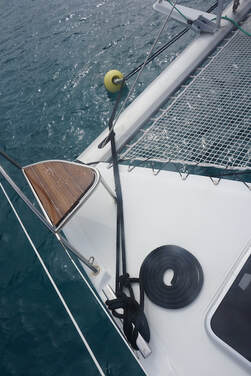 Safely attached to the mooring buoy Safely attached to the mooring buoy
It’s gusty and bouncy overnight and we spin in all directions. Not a great night’s sleep so we are keen to move on. Even though we have checked out of St Barts yesterday and have already hand one extra sneaky night here, we decide to push our luck and have another. We head over to the tiny island of Ile Fourchue, a mere 3nm west of last night’s anchorage, arriving around 10am. By 11am most boats are gone but new ones start arriving. There are 10 mooring buoys and this time we just pick it up from the front of the boat – easy peasy. The buoys are put in by National Parks to protect the sea grass, and again are free of charge, which seems fair if you are obliged to use them. It is really lovely here and we immediately relax and enjoy watching the turtles. Ile Forchue is part of St Barths’ territory - it’s an uninhabited island, privately owned which is part of the marine sanctuary. We take the paddle boards ashore and walk up to the saddle between the two peaks of the island. We can see back to St Barths to the east and further west across to St Martin, as well as a few other small barren and rocky islands in between. It’s very dry, stony and barren place with plenty of cacti and some nesting frigate birds. It’s still pretty windy but not quite so gusty and jerky as we have had. At least the wind is holding us in a consistent direction and we finally have a decent night’s sleep.
You say Saint Martin and I say Sint Maarten – let’s just call the whole thing SXM
We would have been happy to stay at Ile Forchue another day, but we have checked out of St Barths and there is not much else to do so we set off after 11 for the 22nm step across to Marigot Bay in St Martin (FR).
This island of SXM is divided into French and Dutch territory, with an open land border. They have their own flags, different official languages and different currencies. Arriving in a private vessel by sea both have entirely different procedures. The Dutch part of the island is in the South and therefore would have been a closer arrival point for us, but my eyes start to glaze over reading the entry requirements in terms of paperwork, bureaucracy, fees, advance notification, Covid testing and isolation etc. Pretty crazy when you can just drive across (in your car or dinghy) without any restrictions! French side check-in is free of charge and self-service at the computer in the chandlery. Guess where we are going?!
From Ile Forchue we have a really lovely downwind sail with the full main and Genoa and the wind and waves are coming from behind us. We arrive around 2:30pm and anchor in Marigot Bay, just north of the entrance to the lagoon, which lies between the French and Dutch sides. It is a good sandy bottom excellent good holding, a large anchorage which is very popular. There are extensive yacht services here, with numerous marinas and boatyards, chandleries and workshops etc so of course it is a popular place and the anchorage is very busy. It is also a great place to provision before heading to the Bahamas or BVIs. We head over to the Ile Marine Chandlery to check in and even though they don’t charge for the check in, it would be rare that any boatie would come out of a chandlery empty handed. A very smart business move putting that computer in as First Mate does the check in whilst Skipper goes browsing… Lo and behold! Keith finds the Whale Gulper sump pump that we need for our shower and at a very reasonable price. After that we took the dinghy into the lagoon and did a bit of reconnaissance on town and the supermarkets.
It was very gusty and bouncy in the night and we were not sleeping so well. Looked at the track on the anchor alarm in the middle of the night and decided to get up and let some more chain out to dampen our movement and secure us better in the conditions. We possibly didn’t have as much chain out as we thought as Keith had serviced the windlass in Ile Fourchue and we hadn’t recalibrated the chain counter.
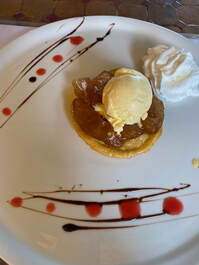 Low calorie dessert Low calorie dessert
Went ashore in the morning with a mission to do a supermarket run and find the “gas man” as we need to fill our gas bottle. Not really exactly sure what kind of gas we are going to get, but apparently there will be some butane in it. We ended up having lunch ashore at ArhAwak. Lovely mussels and Keith had goat curry. Oh and we had dessert too! Very naughty. When we got back there was a note on the swim ladder. I thought it was going to be from the guy behind us complaining that we were anchored too close. Turned out it was from a Canadian couple who have bought a Helia, sight unseen and lying in Columbia, who wanted to have a look around ours. We invited them over tomorrow afternoon.
The next morning we drop off the gas bottle to get filled. It’s been such a drama the past couple of times, due to changing EU regulations that I am nervous when someone says “Yep, no problem!” We left it with the guy intending to pick it up on Monday and went for a walk up to Fort Louis. There is not much of it left, just a few walls and rusty cannons. Great views though and we can see Ella in the marina (Matts and Helena are back in Sweden for a couple of weeks). Decided to go back to the gas man and exchange our bottle instead of waiting for a refill. Tested it out when we got back and it seemed to work fine. Mark and Myra come to visit around 5ish and we showed them around ITIKI. They are a lovely couple who already have a Lagoon and decided it was time to upgrade. They have paid top dollar for the Helia but it has a lot of extras, including a full freezer by all accounts. They plan to have it moved to Panama and cruise north to central America.
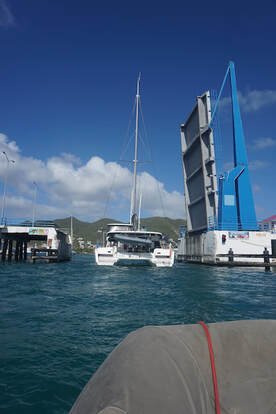 Re-entering the lagoon from the Dutch side Re-entering the lagoon from the Dutch side
We do a supermarket run in the morning and then in the afternoon we took a RIB tour around the lagoon. There are plenty of hurricane wrecks on the French side, but the Dutch seem to have removed them from their side. It’s quite shallow inside the lagoon and although it is possible to anchor inside at various points, it puts you at the mercy of the opening times of the varying bridges at the entrances and across the middle. We went all the way though the causeway into Dutch-land and then out through the lifting bridge into Simpson Bay on the southern (Dutch) side. It’s a long bay with nice enough beaches and plenty of resorts line the shore. Not much in the way of charm but would have been a nice enough anchorage. As we were coming back into the lagoon in it was time for the lifting bridge to open so we went through after the last yacht. Everyone at the yacht club comes out on the balcony to watch. Great entertainment! Wayne and Barbie (SY Hope that we met in Ragusa, Sicily in 2018) came over for drinks in the evening. We have stayed in touch and as very experienced cruisers they have been very helpful with tips and advice. Team Hope have been in SXM since mid-November as they had issues with their bow thruster coming north from the ABCs and then got diesel bug which took out their engine! They have been up on the slips a couple of times, but touch wood, will soon be on their way again. Lovely to see them.
Tour de SXM “en voiture”
We pick up a car at 9am and head off on a tour of the island. We go south first and cross the open border into Sint Maarten. It’s a bit ironic that there are no checks considering the rigmarole you need to go through to check in if you arrive by boat. Anyway our first stop was at Maho Beach, right next to the airport. Planes come in quite low over the beach and when big jets take off, people stand by the fence and get blown over. It’s quite a tourist attraction. Not much action when we get there although one small plane did arrive and fly low overhead. At the airport we can see the dozens of private jets lined up. Check out this classic YouTube video below! 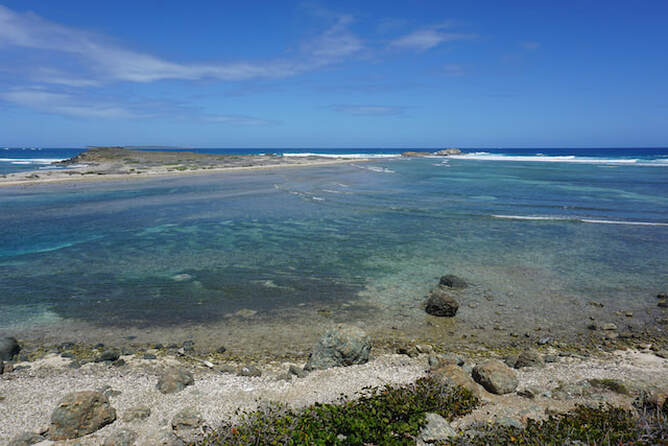 Oyster Pond on the windward coast Oyster Pond on the windward coast
From there we headed north to take a look at Friars' Bay. It’s a small bay with a couple of beach bars and some watersports and the water looks lovely. A small but popular anchorage. We then took the winding and narrow road up to Pic Paradis, at 424m the highest point on the island. From here we had great views down to the east coast. There are some anchorages here, but protection is limited on the windward side, and it feels like it’s been blowing “dogs off chains” since forever. We descend down to Grand Case, stopping for a coffee and pastries along the way. It’s a nice wide bay with a long sandy beach. Quite a few holiday resorts and beach bars but with a really laid back feel. We walk along the beach for a bit and then along the “shopping strip” and decide to come and anchor here in ITIKI for a couple of days for a change of scenery. We also checked out Anse Marcel, a much smaller bay further north, but there is nothing here and it smells of rotting seaweed. Across to Cul de Sac, the lagoon was also a bit smelly too so we moved on. Stopped at a view point overlooking Oyster Pond at the same time as several busloads of cruise ship passengers, but they are slow moving creatures so we managed to get to the lookout and get our photos before too many of them spoiled the view. We crossed back into Dutch land again and the main town on this side, Philipsburg, where 3 cruise ships are currently anchored. It’s hot, noisy and very touristy, and we end up at a Peruvian restaurant to have burgers for lunch (managed to resist the Pisco Sours). The beach here is quite nice, long, white sand but lots of beach bars and loud music. Back from the beach the streets are lined with shops selling duty free and luxury goods. Our final stop (of course) is to the super large Carrefour supermarket. Its huge and at first seems really expensive, until we realise prices are in NAFs or North Antilles Florins (WTF!?) and not USD, which is the other currency used on this side of the fence! Not sure why they don’t just use Euros, I guess they want to differentiate themselves from the French! Grog was relatively cheap though and we end up with lots. Even found tahini, Branston pickle and Vegemite! We drop off the car and load up the dinghy with our booty!
The next morning, after a final shore run, we head north in ITIKI for the 2nm journey to Grand Case, which looked like a nice spot when we were here by car. We only just remembered to empty the holding tanks along the way! We anchor in the NE corner but it turns out to be a poor choice. Holding is good but we spin around 360. The anchor keeps resetting but it’s pretty annoying bobbing around, so we move the next day closer to the centre of the bay. It’s still gusty but at least we were not doing donuts anymore. There is an airport here as well and the small planes come in quite low over the anchorage. We take the RIB ashore and have a long walk along the beach. It’s always lovely to sink your toes into sand.
We have another restless night with rain squalls and strong gusts coming through the anchorage. Around 5:45am there is a loud bang and we realise the anchor bridle has gone, and the weight of the boat is being held on the windlass – not good for it! We have had numerous issues with the clip and shackle breaking and coming off but this time we head up front to see that the port line has completely snapped off close to the central knot. Wow! There was a tiny bit of chafe in the casing but that is major. We jury rig a line through the knot to our foredeck cleats to take the pressure off the windlass. We will need to head back to Marigot and get some materials to make a new bridle. I try to book a marina but it is too complicated, and we eventually anchor close to the lagoon entrance again, with our temporary bridle solution. We go ashore and do our Covid test for entering BVIs as we will be leaving shortly, then it’s over to our favourite chandlery to check-out of SXM and gather bridle materials. We have decided to put snubbers on the bridle and they have to be ordered in and picked up later today, along with a new clip. Keith does an amazing job putting it all together based on someone else’s design we found online. We are still at anchor in 20+kts with a temporary anchor bridle, so once everything is assembled, I steer the boat up onto the anchor to take the pressure off the temporary bridle, ensuring it does pull back onto the windlass. Finally Keith ties on the new bridle at the front of the boat and I attach it to the anchor chain. Now we have 2 bridles on the anchor chain and we end up in a bit of a tangle removing the temporary one, but finally we free the lines and we are on the new bridle alone. It’s quite a different experience. The laid line has more give in it than the old bridle and the snubbers dampen the snatch that normally occurs in the gusts. The lines don’t creak and strain like the plaited line. We don’t seem to swing from side to side as sharply as the snubbers dampen the movement. Very happy with the result and we sleep well, which was long overdue! We are off to the BVIs tomorrow and it will be an early start!
|
AuthorAfter more than 5 years of (minus time off for Covid) and more than 27,000nm Lynda has finally got the hang of this cruising life Archives
June 2024
Categories |
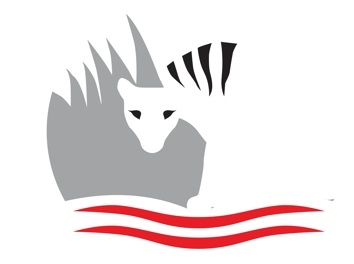
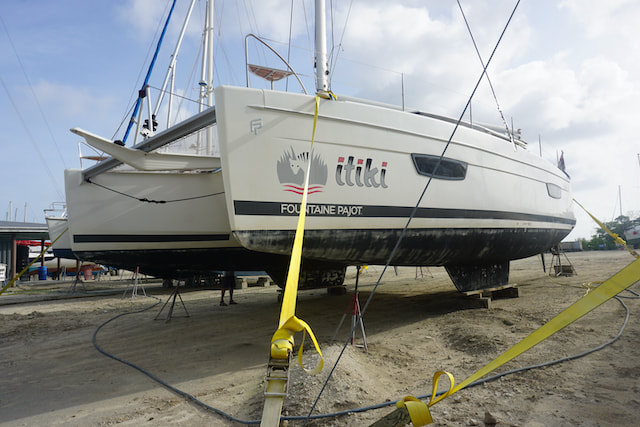

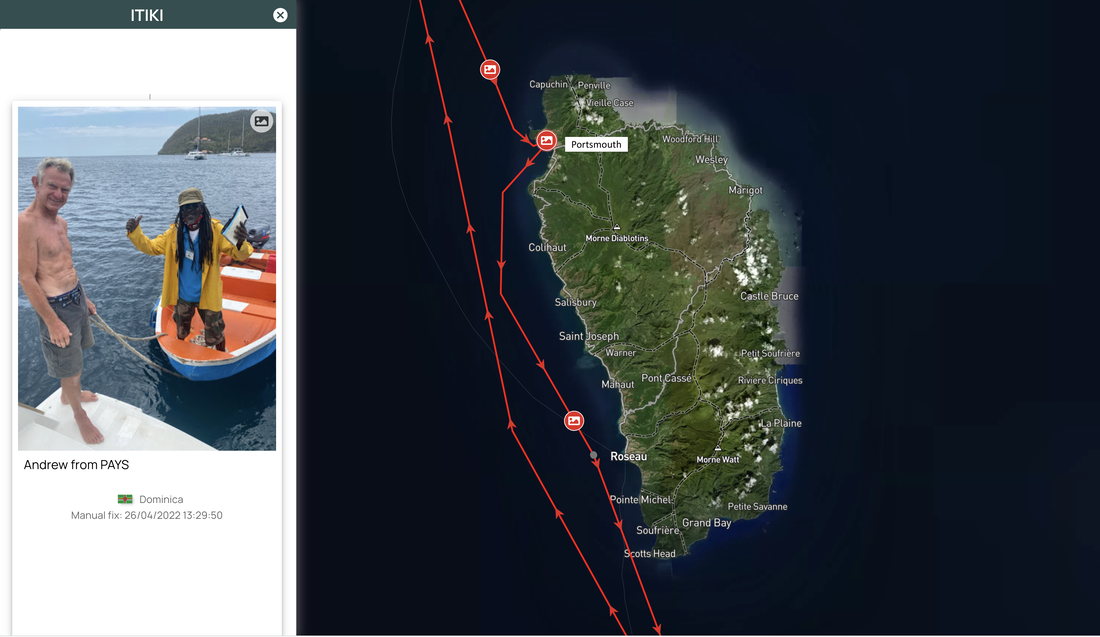
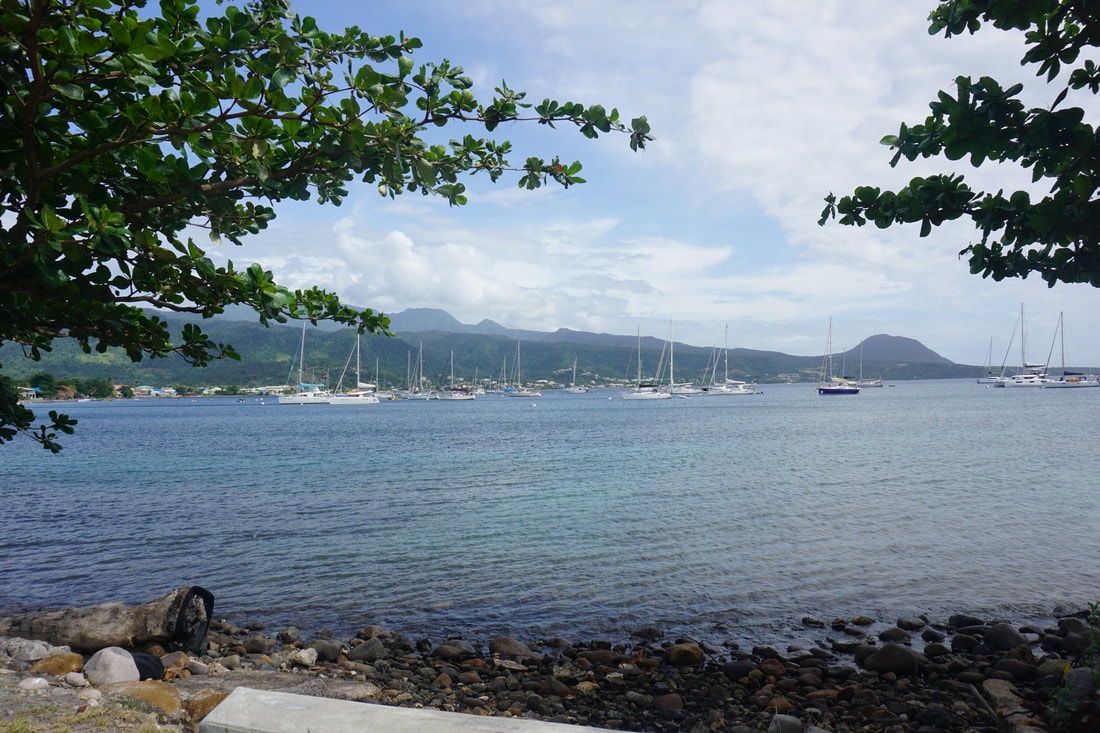
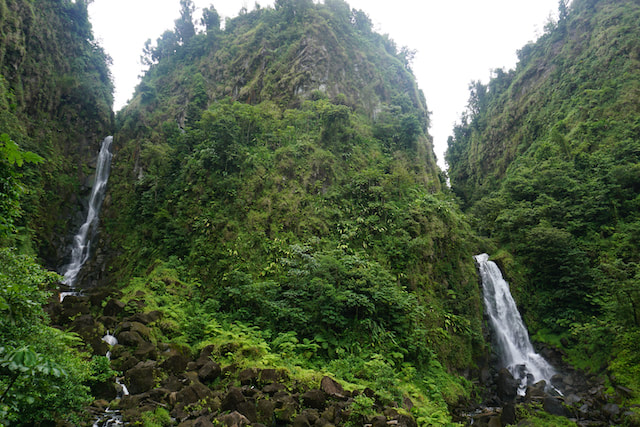

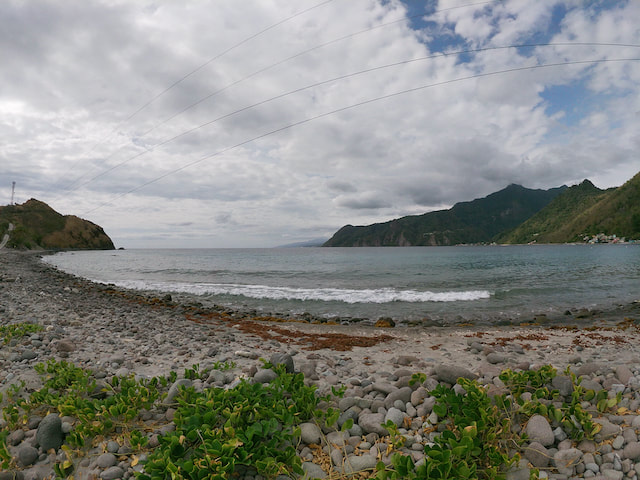
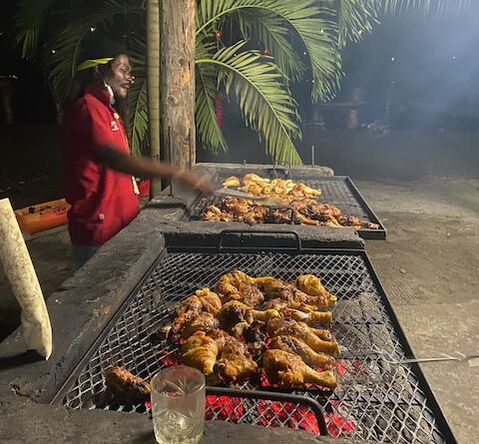
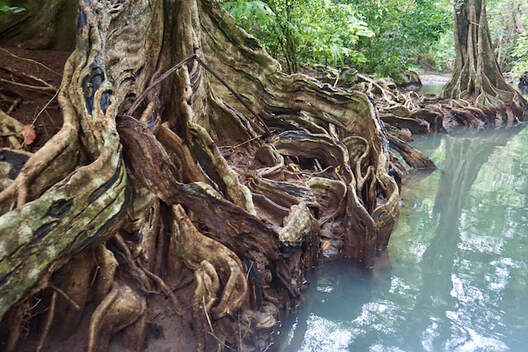
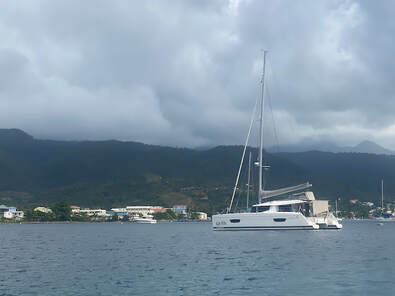
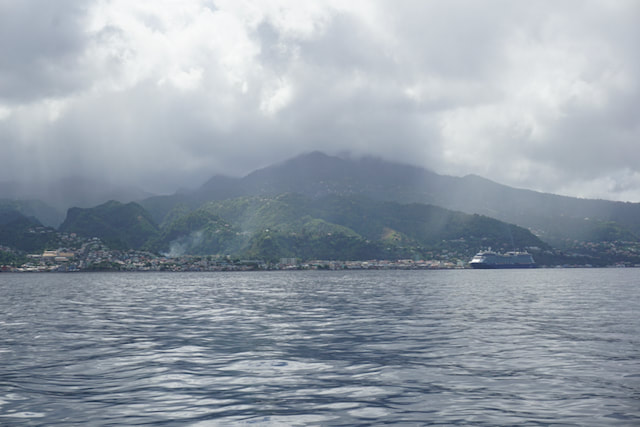
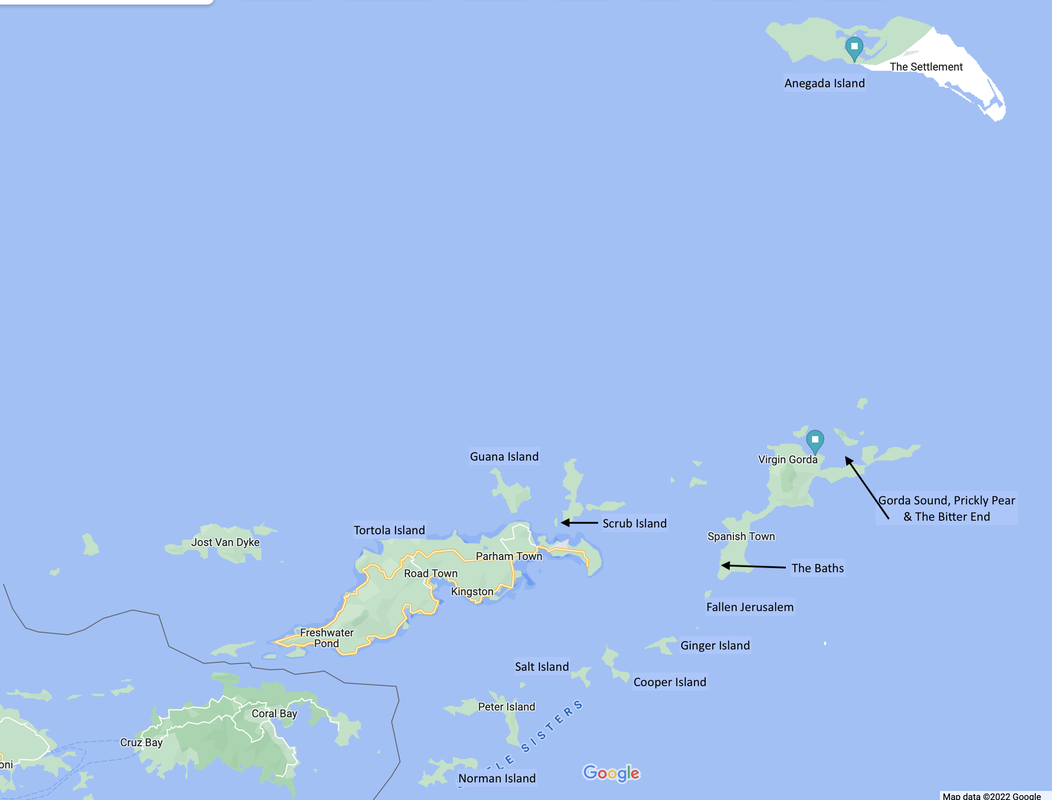
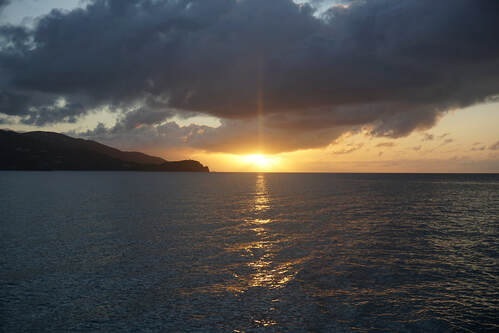

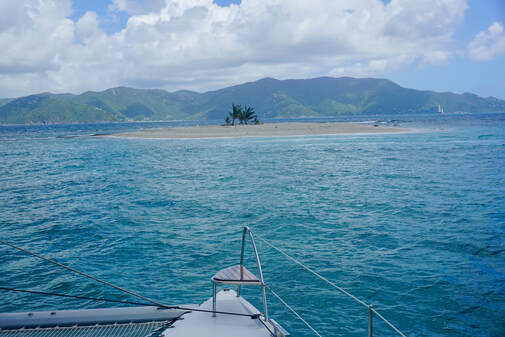

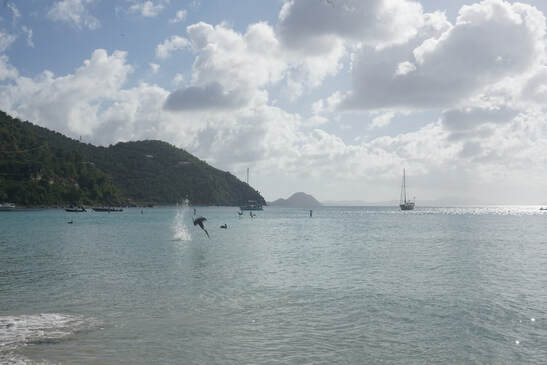
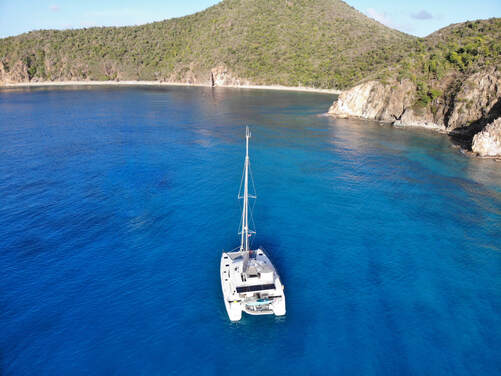
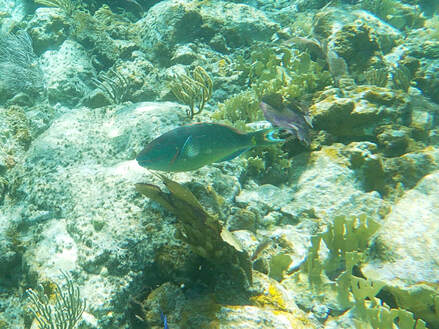
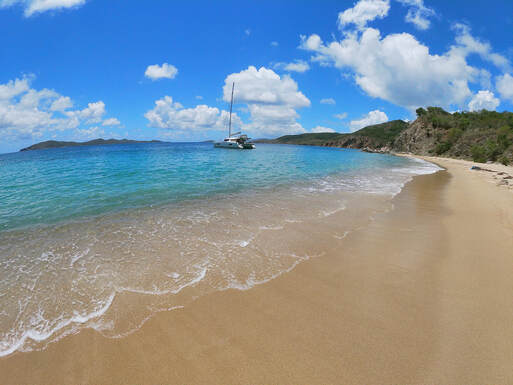
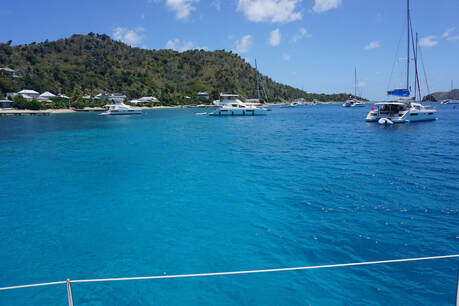
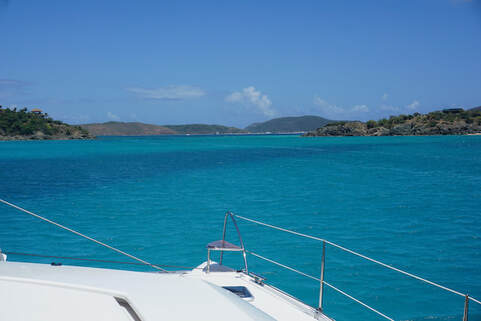
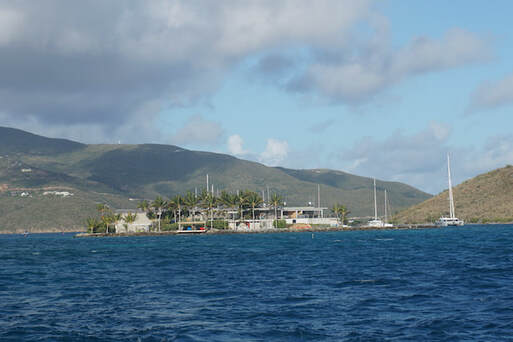
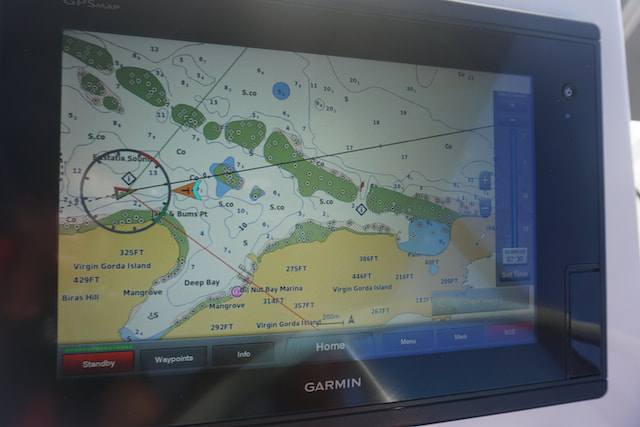
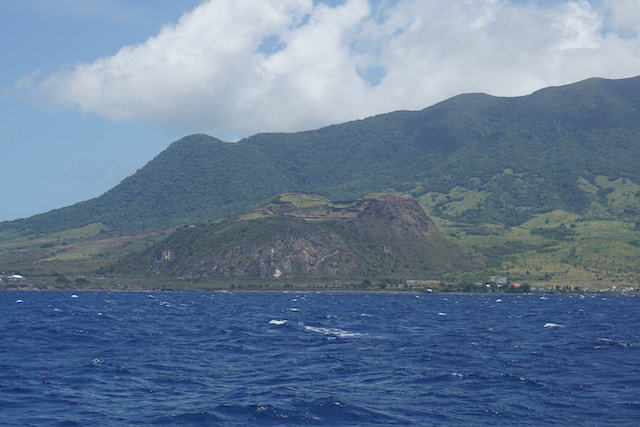
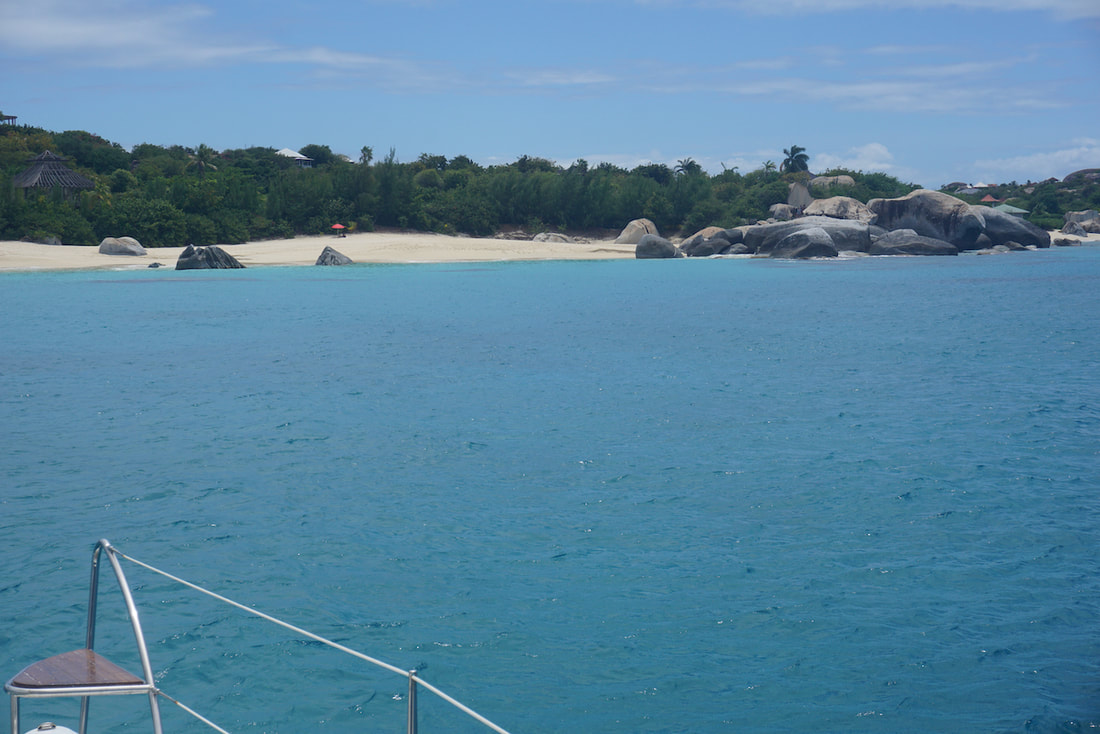
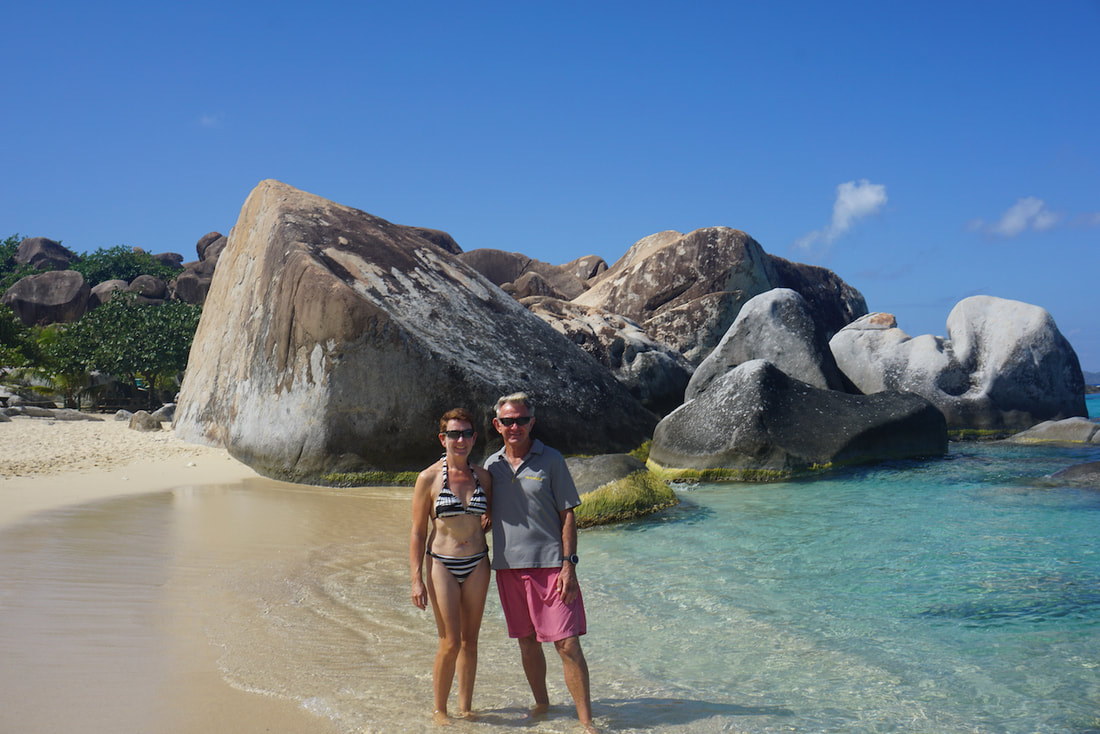
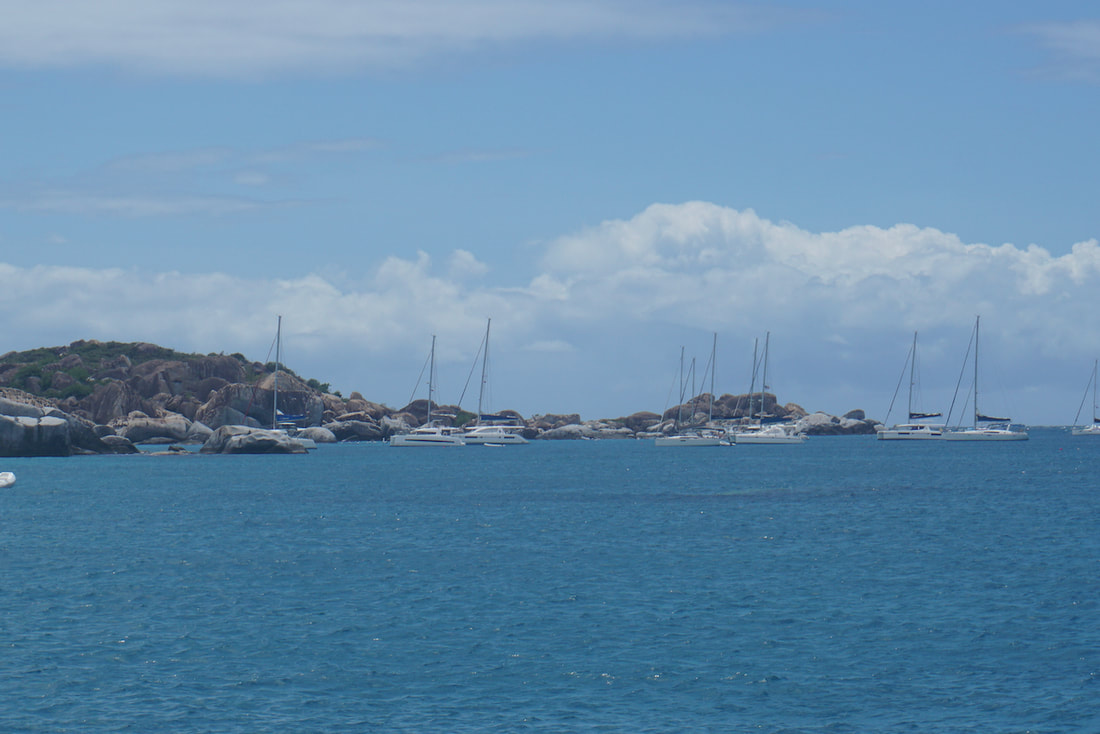
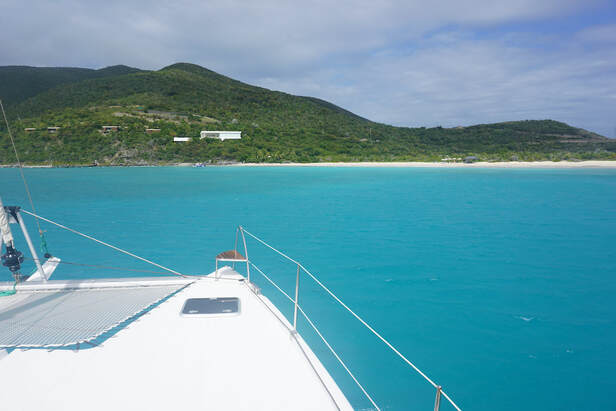
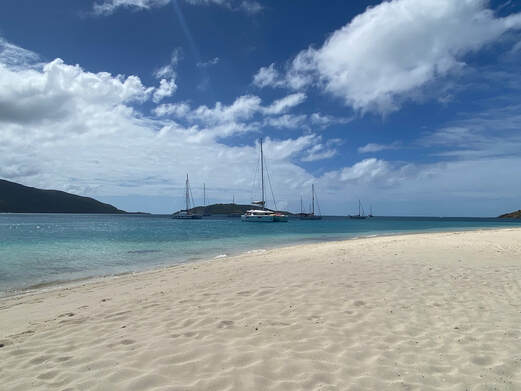
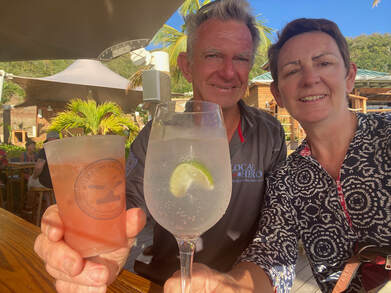
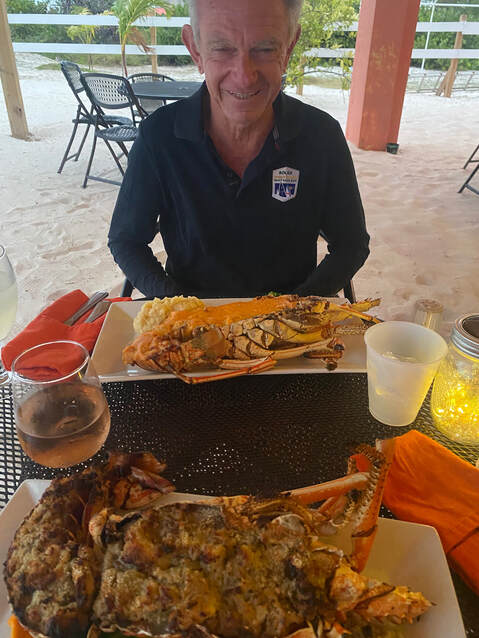

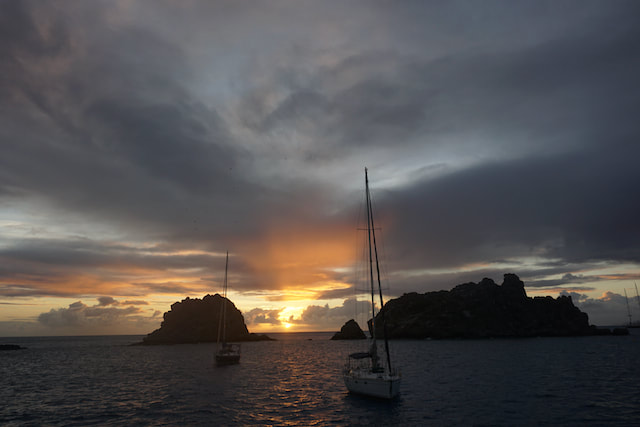
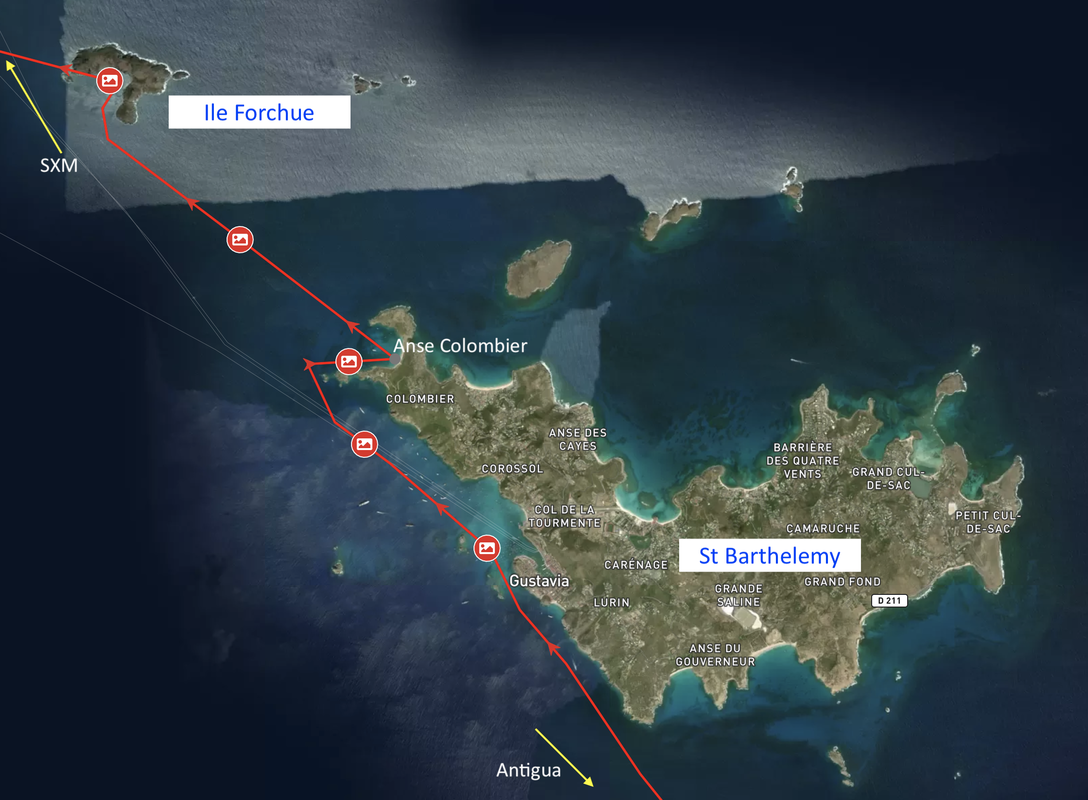
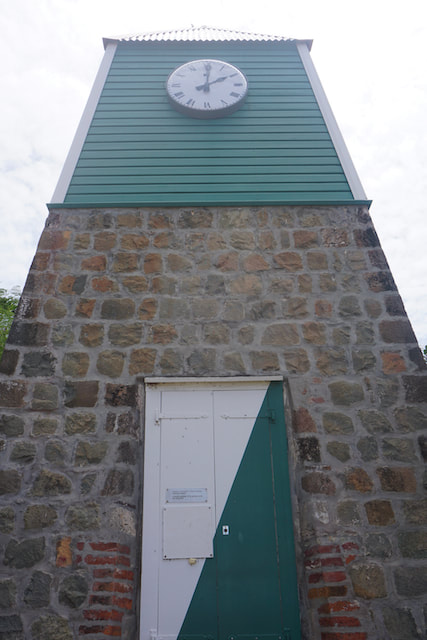
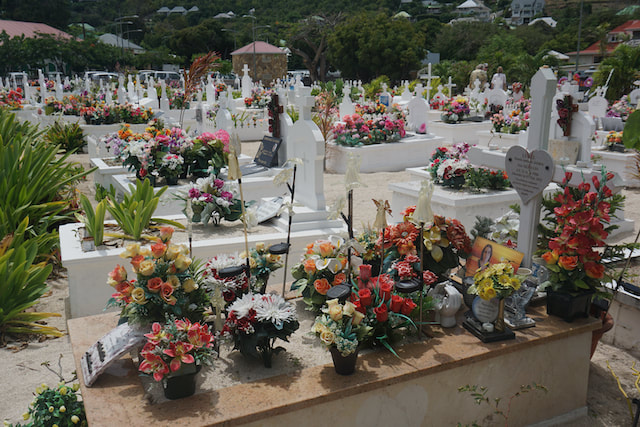
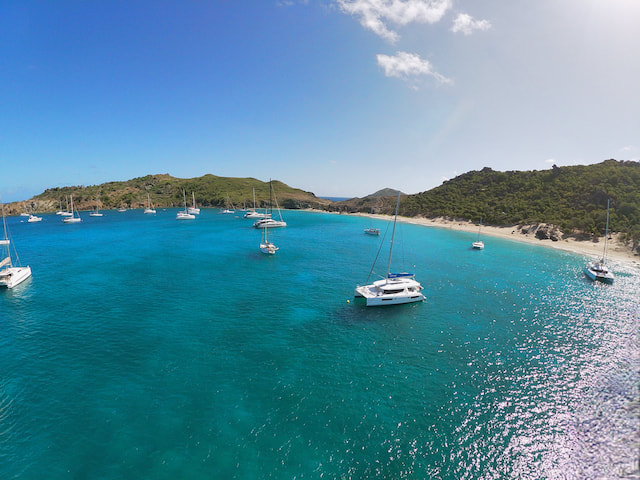
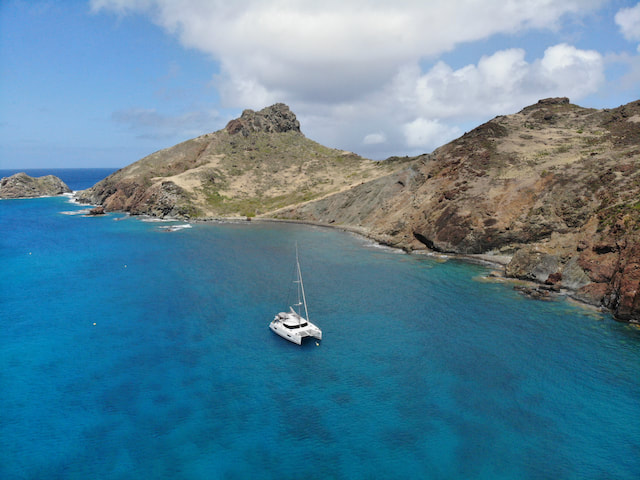
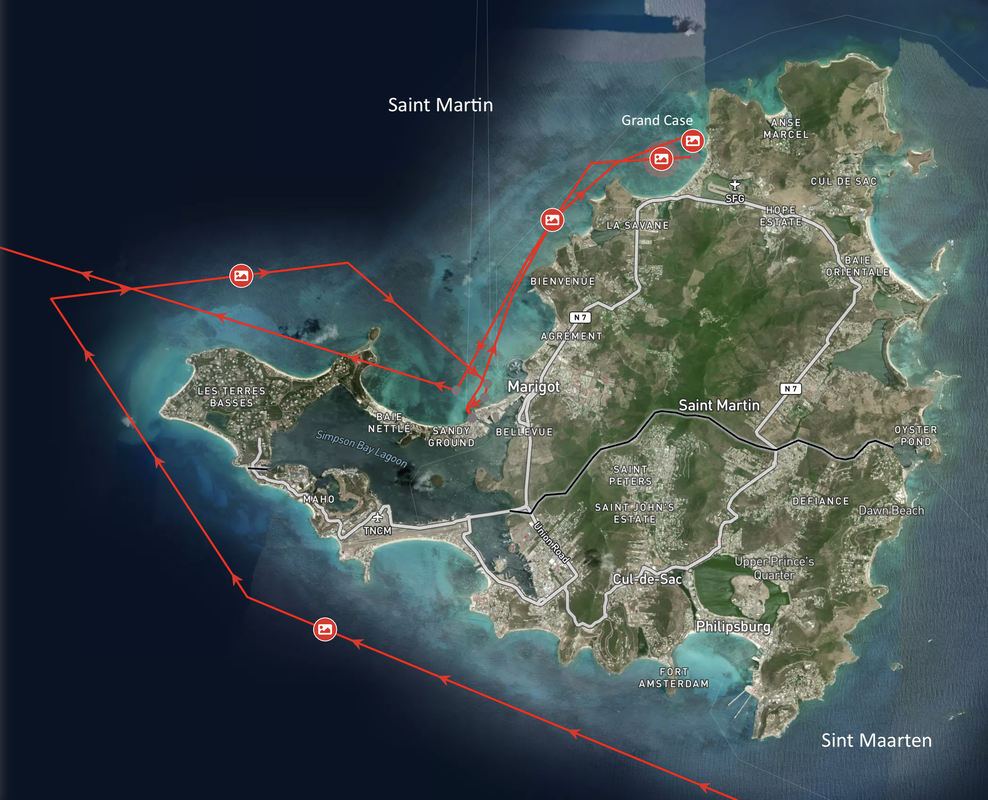
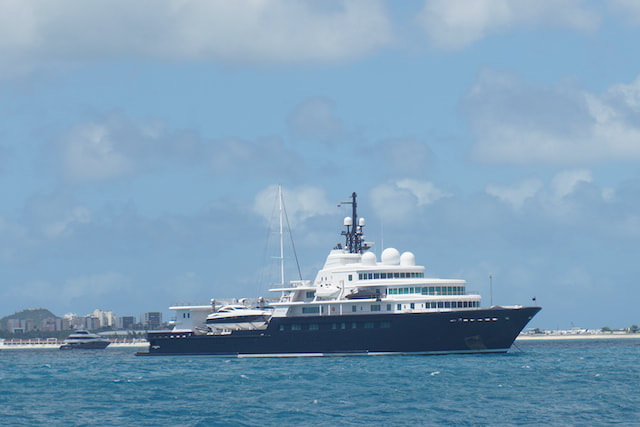

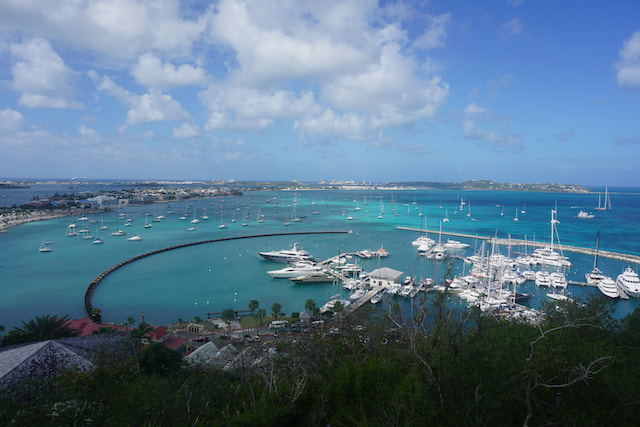
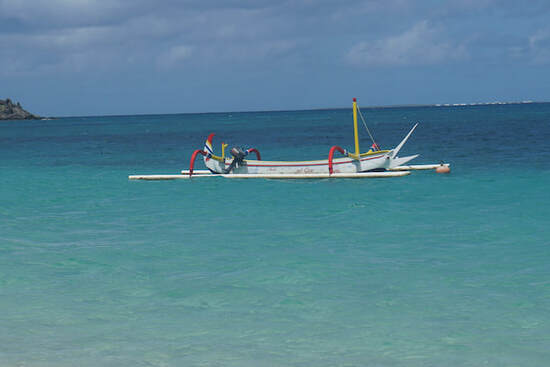
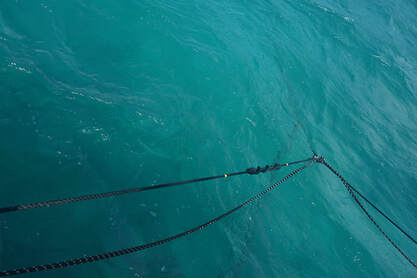
 RSS Feed
RSS Feed
